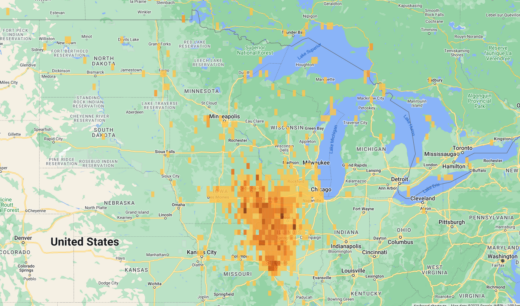The past week revealed not one but two confirmations of Eurasian Tree Sparrow nesting in Wisconsin, a long-awaited state first.
Eurasian Tree Sparrows are related to House Sparrows, but generally prefer a less urban environment. The species has a somewhat unusual history on the continent. Introduced to St. Louis, Missouri in 1870, they became established locally, but their spread outwards from there has been relatively slow. They have gradually been spreading northward through Illinois and Iowa, and in the last decade have been seen multiple times per year in Wisconsin, with some birds lingering but no reports of nesting. Vagrant records suggest some active dispersal in spring, as multiple birds have been seen along the Lake Superior shore at this time. There had been several reports of apparent hybrids showing up, including birds in Clark and Ashland counties, but we do not know if those birds hatched locally.
This was a species we expected to soon be breeding in the state, and we specifically looked for them during the atlas period without any luck. However nest building has now been seen, and twice in one week no less!
The first observation was on 12 April by Blake Cwynar, who discovered a bird building a nest in a Purple Martin house on private property in Lafayette County.
This was followed on 15 April by Aaron Haycraft who reported 2 birds building a nest in a culvert (possibly old Cliff Swallow nests?) at Avon Bottoms in Rock County.
Hopefully we will learn more of the fate of these nests. At the time of this writing, we are not sure if there are two Eurasian Tree Sparrows in Lafayette or if that is a potential hybrid pairing.
It is unclear what the spread of this species will mean for our native avifauna. They seem less aggressive than House Sparrow, but their tendency to take over cavities that could be used by other native birds could be detrimental, especially if their breeding timing precedes native species. Their continued spread is worth keeping an eye on, so if you see one, make you sure report it to eBird!
An interesting postscript: this species is the fourth new species confirmed since the end of atlas field work in 2019, the others being Black-bellied Whistling Duck, Black-billed Magpie, and Mountain Bluebird (hybrid with Eastern).




